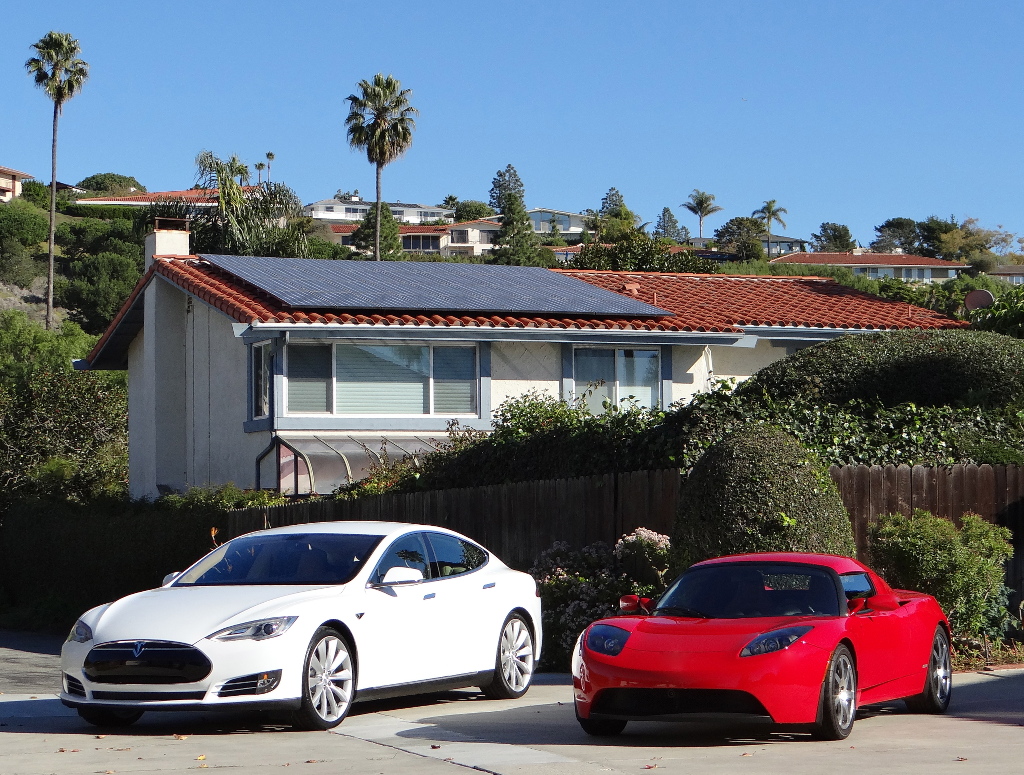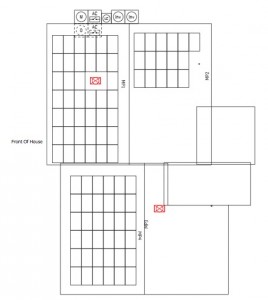News
SolarCity Struggles: National Gridlock (Part III)

In this final post within my SolarCity Struggles series I’ll be outlining the additional complexities that surfaced after our local power company, National Grid, got involved.
National Grid-Lock
 Having already experienced some delays on my solar project due to architectural redesigns, National Grid jumped into the mix to make things even worse by throwing up one road block after another. There was a conflict of interest for National Grid to assist on the project since we would be shifting more than $170,000 of revenue from them to SolarCity. I’d only see a tiny slice of that by way of my energy savings. Despite many city mandates to be “More Green”, the utility companies clearly have no interest in assisting customers to go solar since it would be counter productive for them.
Having already experienced some delays on my solar project due to architectural redesigns, National Grid jumped into the mix to make things even worse by throwing up one road block after another. There was a conflict of interest for National Grid to assist on the project since we would be shifting more than $170,000 of revenue from them to SolarCity. I’d only see a tiny slice of that by way of my energy savings. Despite many city mandates to be “More Green”, the utility companies clearly have no interest in assisting customers to go solar since it would be counter productive for them.
Roadblock #1
National Grid would not allow “net metering” (where you can re-supply energy through solar power) for two different meters at the same address. SolarCity stepped up and offered to join my two meters and upgrade my panel (from 400A to 600A) in order to support net metering. Accounting issues aside, I agreed to the proposed change and moved forward with yet another site visit that would lead to an engineering redesign.
Roadblock #2
Having (verbally) moved past this, National Grid then reported that the transformer for my area was only capable of handling 23kW of generated power and could not support SolarCity’s proposed 56kW system. This was by the most serious setback since it would require a design that would cut my generation down to 23kW or less. This meant dropping the farm completely and scaling the house from 35kW to 23kW.
A 23kW design called for the front of my house to have solar panels while only a portion of the rear of the house would be retrofitted with panels. This would have looked really odd so we decided to scale back the design to a 18kW system and only include panels on the front of the house.
National Grid informed me that the transformers support between 8 – 12 houses in my area so any neighbors that undergo a solar project will be limited to the remaining 5kW that the transformer can support.
Next Steps
Going from a 56kW to 18kW (a 68% drop in planned production) system will reduce my energy coverage to 32% of my power needs through solar. This is unfortunately the case due to National Grid’s limitation despite my property having enough roof surface to generate 100% of my energy needs.
I will save approximately $56,000 over the next 20 years with this smaller set up, a far departure from the original projected savings of $105,000 but still worth pursuing.
A friendly note from SolarCity arrived on September 1st letting me know that my installation was scheduled for December 8th and 9th because of the magnitude of the project. Considering this 18kW system is a third of what would have been, I couldn’t help but wonder how SolarCity would have handled the original plans. I can’t imagine starting this project in the dead of a New England winter. SolarCity indicated that the project would require 4-6 weeks before the “go live” date which meant I wouldn’t be completing until January 2015. That puts the project at about 10 months from start (initial consultation) to finish and assuming all goes well from here on out.
Summary
SolarCity has made a number of mistakes on this project since the beginning; from improperly sizing the system to not knowing the requirements and restrictions of the local power company; to not following owner requests on layout; to not understanding power generation limits imposed by the power company.
My experience with SolarCity has led me to conclude that they’re not ready for widespread adoption outside of key markets and have a lot of work and learning to do before they will be ready for that next stage of growth.
I truly hope the project moves forward. My next updates will be on the post installation experience which will hopefully take place sometime between now and the end of this year. Stay tuned.
SolarCity Struggles Series – Read from the beginning
Image Source: Sun Powered EVs

News
Tesla FSD fleet is nearing 7 billion total miles, including 2.5 billion city miles
As can be seen on Tesla’s official FSD webpage, vehicles equipped with the system have now navigated over 6.99 billion miles.

Tesla’s Full Self-Driving (Supervised) fleet is closing in on almost 7 billion total miles driven, as per data posted by the company on its official FSD webpage.
These figures hint at the massive scale of data fueling Tesla’s rapid FSD improvements, which have been quite notable as of late.
FSD mileage milestones
As can be seen on Tesla’s official FSD webpage, vehicles equipped with the system have now navigated over 6.99 billion miles. Tesla owner and avid FSD tester Whole Mars Catalog also shared a screenshot indicating that from the nearly 7 billion miles traveled by the FSD fleet, more than 2.5 billion miles were driven inside cities.
City miles are particularly valuable for complex urban scenarios like unprotected turns, pedestrian interactions, and traffic lights. This is also the difference-maker for FSD, as only complex solutions, such as Waymo’s self-driving taxis, operate similarly on inner-city streets. And even then, incidents such as the San Francisco blackouts have proven challenging for sensor-rich vehicles like Waymos.
Tesla’s data edge
Tesla has a number of advantages in the autonomous vehicle sector, one of which is the size of its fleet and the number of vehicles training FSD on real-world roads. Tesla’s nearly 7 billion FSD miles then allow the company to roll out updates that make its vehicles behave like they are being driven by experienced drivers, even if they are operating on their own.
So notable are Tesla’s improvements to FSD that NVIDIA Director of Robotics Jim Fan, after experiencing FSD v14, noted that the system is the first AI that passes what he described as a “Physical Turing Test.”
“Despite knowing exactly how robot learning works, I still find it magical watching the steering wheel turn by itself. First it feels surreal, next it becomes routine. Then, like the smartphone, taking it away actively hurts. This is how humanity gets rewired and glued to god-like technologies,” Fan wrote in a post on X.
News
Tesla starts showing how FSD will change lives in Europe
Local officials tested the system on narrow country roads and were impressed by FSD’s smooth, human-like driving, with some calling the service a game-changer for everyday life in areas that are far from urban centers.

Tesla has launched Europe’s first public shuttle service using Full Self-Driving (Supervised) in the rural Eifelkreis Bitburg-Prüm region of Germany, demonstrating how the technology can restore independence and mobility for people who struggle with limited transport options.
Local officials tested the system on narrow country roads and were impressed by FSD’s smooth, human-like driving, with some calling the service a game-changer for everyday life in areas that are far from urban centers.
Officials see real impact on rural residents
Arzfeld Mayor Johannes Kuhl and District Administrator Andreas Kruppert personally tested the Tesla shuttle service. This allowed them to see just how well FSD navigated winding lanes and rural roads confidently. Kruppert said, “Autonomous driving sounds like science fiction to many, but we simply see here that it works totally well in rural regions too.” Kuhl, for his part, also noted that FSD “feels like a very experienced driver.”
The pilot complements the area’s “Citizen Bus” program, which provides on-demand rides for elderly residents who can no longer drive themselves. Tesla Europe shared a video of a demonstration of the service, highlighting how FSD gives people their freedom back, even in places where public transport is not as prevalent.
What the Ministry for Economic Affairs and Transport says
Rhineland-Palatinate’s Minister Daniela Schmitt supported the project, praising the collaboration that made this “first of its kind in Europe” possible. As per the ministry, the rural rollout for the service shows FSD’s potential beyond major cities, and it delivers tangible benefits like grocery runs, doctor visits, and social connections for isolated residents.
“Reliable and flexible mobility is especially vital in rural areas. With the launch of a shuttle service using self-driving vehicles (FSD supervised) by Tesla in the Eifelkreis Bitburg-Prüm, an innovative pilot project is now getting underway that complements local community bus services. It is the first project of its kind in Europe.
“The result is a real gain for rural mobility: greater accessibility, more flexibility and tangible benefits for everyday life. A strong signal for innovation, cooperation and future-oriented mobility beyond urban centers,” the ministry wrote in a LinkedIn post.
News
Tesla China quietly posts Robotaxi-related job listing
Tesla China is currently seeking a Low Voltage Electrical Engineer to work on circuit board design for the company’s autonomous vehicles.

Tesla has posted a new job listing in Shanghai explicitly tied to its Robotaxi program, fueling speculation that the company is preparing to launch its dedicated autonomous ride-hailing service in China.
As noted in the listing, Tesla China is currently seeking a Low Voltage Electrical Engineer to work on circuit board design for the company’s autonomous vehicles.
Robotaxi-specific role
The listing, which was shared on social media platform X by industry watcher @tslaming, suggested that Tesla China is looking to fill the role urgently. The job listing itself specifically mentions that the person hired for the role will be working on the Low Voltage Hardware team, which would design the circuit boards that would serve as the nervous system of the Robotaxi.
Key tasks for the role, as indicated in the job listing, include collaboration with PCB layout, firmware, mechanical, program management, and validation teams, among other responsibilities. The role is based in Shanghai.
China Robotaxi launch
China represents a massive potential market for robotaxis, with its dense urban centers and supportive policies in select cities. Tesla has limited permission to roll out FSD in the country, though despite this, its vehicles have been hailed as among the best in the market when it comes to autonomous features. So far, at least, it appears that China supports Tesla’s FSD and Robotaxi rollout.
This was hinted at in November, when Tesla brought the Cybercab to the 8th China International Import Expo (CIIE) in Shanghai, marking the first time that the autonomous two-seater was brought to the Asia-Pacific region. The vehicle, despite not having a release date in China, received a significant amount of interest among the event’s attendees.









